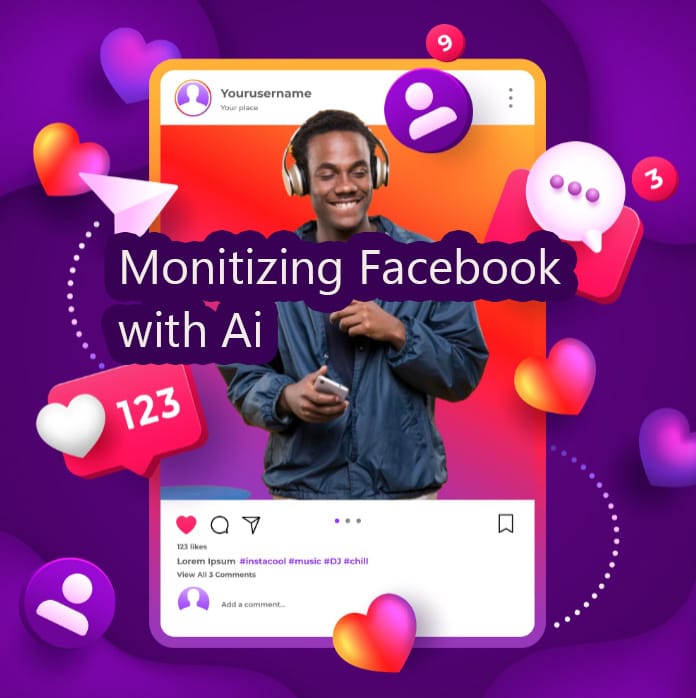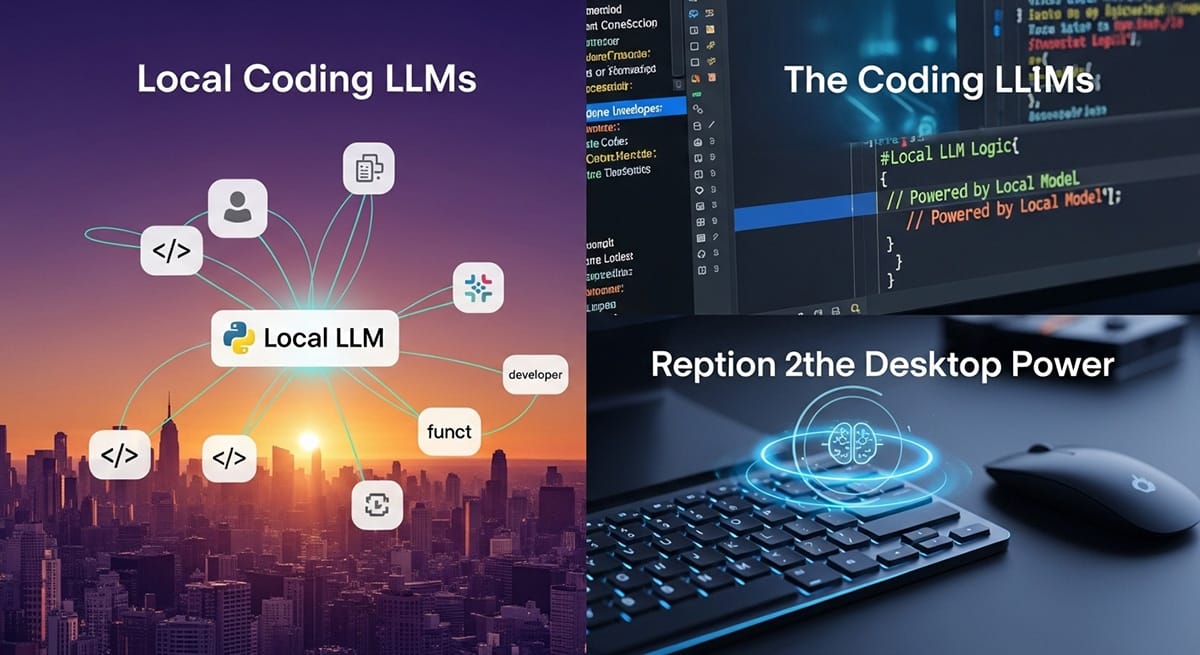This document synthesizes information from four sources, exploring how Artificial Intelligence (AI) can be leveraged for business growth, marketing effectiveness, and creating income streams. The sources include a webinar with RightBlogger founders, a case study of building a successful app with AI, and two examples of side hustles using AI.
Podcast
Source 1: AI Marketing to Grow Your Business (+ Q&A) with RightBlogger Founders
Main Theme
This webinar focuses on a practical, step-by-step “AI marketing flywheel” for content creation and business growth using the RightBlogger suite of tools.
Key Ideas and Facts
- RightBlogger Platform:
- RightBlogger is a platform with over 80 AI-powered tools designed to assist with content creation, keyword research, and SEO.
- Free and paid unlimited plans are available.
- The unlimited plan includes a 30-minute strategy call with one of the founders.
- AI Marketing Flywheel:
- Identify Real Audience Pain Points
- The foundation and most critical step.
- Focus on actual problems, not artificial ones.
- Quote: “Step one, identify real audience pain points. That’s always step number one. You want to really figure out what your audience is having the most struggles with…”
- Create Content to Meet Those Pain Points
- Use AI tools to accelerate content creation.
- Ensure Content Solves Challenges
- Content must directly address and resolve problems.
- Promote Content
- Utilize SEO, email marketing, and relationship building.
- Identify Real Audience Pain Points
- Keyword Research:
- Importance of using keyword research tools within RightBlogger.
- Finding relevant and less competitive terms.
- Examining Google search results to validate intent and competition. Quote: “…something like Squarespace templates gets an estimated 9,900 monthly searches…niching down to something that fewer people are searching for is a really smart way to go ahead and position yourself for actually driving more targeted customers…”
- Content Creation Process:
- Using video as a starting point for wider reach.
- Utilizing the AI video-to-blog post generator tool.
- Features include “My Tone” training, internal linking, and project settings. Quote: “…video is that you’re increasing your ability to be discovered online…YouTube is the second largest search engine in the world…”
- Promotion:
- Ranking well in search engines, leveraging email lists, and networking. Quote: “Email marketing is one of the most effective channels…”
Key Takeaways
- Experience the problem firsthand to better understand your audience.
- AI is a supplement, not a replacement for human input and experience.
- Focus on real value creation.
- Growing an email list is crucial.
- Future platform development includes embedding AI-powered tools on users’ websites.
Source 2: I Used AI to Build This $900K/mo App in a Day
Main Theme
This video showcases how to create a functional web application using AI tools, focusing on a plant identification app.
Key Ideas and Facts
- AI for App Development
- Demonstrates that even those without coding experience can build applications.
- Uses Claude AI for generating code.
- Cloud AI
- Chatbot similar to ChatGPT, optimized for coding.
- Rapid Prototyping
- Uses an online IDE (Replit) for quick development and testing.
- API Integration
- Incorporates Google Gemini API for plant identification.
- Iterative Development
- AI helps generate initial code, troubleshoot errors, and add features incrementally. Quote: “…even if you encounter and run into any sort of Errors while developing an app…you can just go ahead directly ask AI and fix it right away…”
Key Features Implemented
- Image upload
- Camera access for live photos
- Displaying plant information
- UI improvements (navigation bar, footer, card sections)
- Responsive design
Key Takeaways
- Coding knowledge is becoming negligible, though basic understanding helps.
- AI can assist in all stages of the development process.
- Complex applications can be rapidly developed with AI.
Source 3: AI-Powered Side Hustle Model
Main Theme
This source details how AI can accelerate making money online with digital products.
Key Ideas and Facts
- Digital Products:
- Examples: eBooks, courses, templates, memberships.
- No inventory or shipping required.
- Can be created once and sold unlimited times.
- Finding an Idea:
- Based on hobbies and existing knowledge. Quote: “You don’t need to know every single thing about Pottery…you just can take the knowledge you already have and share that with others because there are always going to be people who know less than you…”
- Growing a Following:
- Prioritize YouTube over platforms like Etsy or Amazon.
- Email Marketing:
- Key source of sales.
- Freebies help collect email signups. Quote: “…an email list is actually 40 times more effective at making sales than social media alone…”
Key Takeaways
- Experience outweighs credentials.
- Perfection isn’t necessary from the start.
- Automations are essential for passive income.
Source 4: Making Money on Facebook with AI
Main Theme
This source explains strategies for Facebook monetization using AI.
Key Ideas and Facts
- Two Main Ways to Monetize:
- Direct Sales on Your Website
- Facebook Bonus Program
- Three Key Principles (PFN, Pace, Niche):
- Private Facebook Network (PFN): Build multiple pages in the same niche to drive traffic.
- Pace: Maintain consistent posting frequency.
- Niche: Specialize to build authority. Quote: “you need to get into a rhythm just make it methodical make it purposeful if you’re going to be sporadic it’s much harder to be successful on Facebook stick to a plan”
Key Takeaways
- Consistency in posting is crucial.
- Increase posting frequency to grow engagement.
- Focus on driving targeted traffic or leveraging Facebook bonus programs.
Overall Themes and Conclusions
AI as a Business Enabler
- AI democratizes access to business opportunities, reducing development time and streamlining marketing.
Strategic Planning
- Success requires a solid strategic plan for content, marketing, and business development.
Human Element
- AI is a tool to augment human effort, not replace it.
Recommendations
- Identify real audience needs.
- Utilize AI for content creation, automation, and marketing.
- Build an email list with automated workflows.
- Develop a brand with unique products or services.
- Maintain content strategy consistency.
Podcast Transcript
Hey, everyone. Ready to unlock the power of AI for your online business? Today, we’re gonna dive into some YouTube videos and a transcribed text all about using AI to boost your business. Yeah. Sounds fascinating.
We’ll see how AI can help with marketing and content creation, even building your own app. Wow. That’s impressive. I’m curious to see how that works. And get this.
You can even use AI to launch a digital products business without spending any money. $0. No way. Starting a business with no money? That’s gotta be a game changer.
I know. Right? I’m excited to dig into all of this. Me too. Where do we start?
Alright. Let’s kick things off with this YouTube video from Write Blogger. Write Blogger. Yeah. I’ve heard of them.
The founders, Ryan and Andy, they break down this concept called the AI marketing flywheel. Basically, it’s all about figuring out what your audience is struggling with their pain points. Pain points. Makes sense. You gotta know what problems you’re solving.
Exactly. Exactly. And their approach to uncovering those pain points was really interesting. Oh, yeah. What did they say?
Well, they emphasized going beyond just, you know, assumptions. Okay. So, like, not just guessing what people need. Right. They said you should actually experience those pain points yourself firsthand.
Woah. Really? Put yourself in the customer’s shoes. Yeah. Like, they use the example of a Squarespace web designer.
To really get the client’s struggles, they suggested actually building a site on Squarespace yourself. Oh, interesting. So, like, pick a template, navigate the platform, try to design something. Yep. Feel that frustration.
I like that. Get your hands dirty to really understand the challenges. Exactly. And they even have this keyword research tool that can help you see what people are actually searching for on Google. Oh, cool.
A tool to help you find those pain points. Yeah. I saw Ryan use it to explore, topics related to Squarespace templates, and it was crazy. All these potential niches just popped up. Wow.
So it was like a brainstorming tool for business ideas. Kinda. Yeah. Yeah. And here’s the thing.
They didn’t just stop at finding keywords. They dug into the Google search results, like, actually looked at what was already ranking. Smart move. You gotta see what the competition is doing. Right.
It it not only validates the demand, but it shows you what people are actually looking for, like, their intent. I see. So it’s not just about the keywords themselves, but understanding why people are searching for them. Exactly. And they pointed out that even Squarespace has a blog post about, templates for therapists, but it’s not really giving people what they want.
Oh, interesting. So even big companies can miss the mark sometimes. Totally. It’s like they said you gotta read the room, see what’s already out there, and figure out how to create something better. Right.
Fill that gap. That makes so much sense. Now speaking of content, Right Blogger has these two AI tools that can really step up your content creation game. Oh, tell me more. Okay.
So first, there’s the YouTube video to blog post generator. This thing lets you repurpose your video content, like, in a snap. Woah. That sounds efficient. Turning videos into blog posts.
Yep. It’s like magic. And then they also have an AI article writer. This thing can whip up outlines, and it can even generate full articles for you. It’s pretty amazing how these tools can take your ideas and just run with them.
Wow. So you could have AI doing the heavy lifting on content creation. Yeah. But and this is important. Ryan and Andy, they were really clear that AI should enhance your creativity, not replace it.
Okay. So it’s a tool, not a crutch. Exactly. They really emphasize the importance of editing the AI’s output and, you know, injecting your own voice into the content. Right.
Make it sound like you, add your own personality. Yep. Because it’s your expertise and your voice that will really connect with your audience. Makes sense. People wanna hear from a real person, not a robot.
Exactly. So let’s say you’ve got this awesome content. How do you actually get it in front of the right people? Yeah. That’s the million dollar question.
The right blogger guys highlighted a few key strategies. They’re big on SEO, you you know, for getting organic traffic from Google searches. SEO. Yeah. That’s important for getting found online.
Right. And Ryan, he actually used his own blog post as an example, a post about keyword tools. He followed his process, and guess what? His post ranks high in the search results. Nice.
Proof that it works. Yeah. It’s not just theory. It actually delivers. They also emphasized email marketing for building relationships with your audience.
Both Ryan and Write Blogger have seen, like, crazy click through rates from their email lists. Wow. That’s a testament to the power of email. I guess people still check their inboxes. Yeah.
They do. It’s a great way to build that connection and nurture your leads. So true. Keep people engaged and coming back for more. Now they also talked about collaborating with other creators in your niche, like guest blogging, podcast appearances, things like that.
Cross promotion, smart. Tap into other people’s audiences. Exactly. Like Ryan said, if you’re targeting therapists with those Squarespace templates, why not reach out to, like, therapy related podcasts or blogs and share your expertise? Brilliant.
Makes total sense. Right. Okay. Ready for something completely different? Get this.
There’s this other YouTube video from a guy named Astro k Joseph, and he literally builds a plant identification app. A plant identification app. What does that even do? You upload a picture of a plant, and the app tells you what it is, gives you info about it. Sounds kinda cool, but how is that a business?
Well, at the beginning of the video, Astro mentions these other successful plant identifier apps that are making, like, hundreds of thousands of dollars every month. Wait. What? Hundreds of thousands? Yeah.
Seriously. Seriously. And the crazy part is he built this whole thing using AI. Woah. Hold on.
Yeah. AI can build apps now. I’m blown away. I know. It’s wild.
He would type in these simple prompts and the AI, Claude AI, it would just spit spit out the code for the app. No way. Like, AI is doing all the coding that sounds almost too good to be true. I know. And he used this online coding platform called Replit, which makes it super accessible even if you don’t know how to code.
That’s incredible. It’s like AI is making app development accessible to anyone. Right. And what I really appreciated was he didn’t just, like, skip over the coding part. He showed us how to deal with errors, you know, troubleshoot problems.
Remember when he ran into the issue with the, outdated Gemini model? Oh, yeah. That was a good lesson. Things don’t always go smoothly. Right.
And he used Claude AI to figure out the fix right there on the spot. So AI can help you debug your code too. That’s super helpful. Right. It’s not just about generating code.
It’s like an AI assistant throughout the whole process. I like that. It’s like having an AI coding buddy. So after he got the basic app working, he started adding all these cool features, like displaying the image, creating information tables, even a, like, a slick moving gradient background. Wow.
So he really tricked out that app all using AI. Yeah. And he did it all with just simple prompts to Claude AI. It’s crazy how much you can do with these tools. It is.
What really stood out to me was how he used visuals to guide the AI. Remember that example where he uploaded a picture of a card design he wanted? Yeah. And Claude just created the code for it, almost perfectly. I know.
It’s, like, mind blowing how intuitive these AI tools are becoming. Okay. Ready for our last deep dive of this part? We’re gonna switch gears and explore the world of digital products. Digital products.
I’m all ears. That’s a hot topic right now. I think this one’s gonna be a game changer. I think so too. Yeah.
So we’ve got this transcribed text from someone who built a successful digital products business. And get this, they started with $0. 0 dollars. No way. How’s that even possible?
That’s what I thought. No inventory, no shipping costs. It’s all about your knowledge and creativity. They shared their story about, their background in photography. Interesting.
So they used their photography skills to create digital products. Not exactly. They said they weren’t the best photographer, but they knew enough about a specific marketing technique to create an ebook that brought in over $500,000 in revenue. Woah. Wait a minute.
Over half a million dollars from an ebook. That’s insane. And they weren’t even a pro photographer. I know. It’s crazy.
And they also shared this funny story about a business professor who was teaching entrepreneurship but had never actually run a business themselves. Oh, wow. That’s ironic. Talk about out of touch. Right.
So the point is you don’t have to be the ultimate expert. You just need to know more than your audience. Share what you know, and people will pay for it. So true. Everyone has something valuable to offer.
Okay. So this person, they were big on growing an organic following, especially on YouTube. They didn’t like relying on platforms like Etsy or Amazon. Yeah. It makes sense to build your own platform.
Have more control. Exactly. They said they consistently post new videos every week focusing on, you know, helpful content, educational stuff. Make sense, provide value, and the audience will follow. And they actually shared a tip about batch recording those YouTube videos, like dedicating just a couple of days a month to create a month’s worth of content.
Smart. Get it all done at once. Right. Super efficient. Now besides YouTube, they were also a big advocate for building an email list.
Email? Yeah. Yeah. I guess it’s not dead yet. Why were they so into it?
Well, they they shared this stat that blew my mind. Email marketing is 40 times more effective at driving sales than social media. 40 times. Okay. Now that’s impressive.
I guess they’re taking my email list more seriously. Right. It’s that direct connection with your audience, and you can nurture them over time. They actually talked about using this, five day automated email sequence to, like, welcome new subscribers, provide value, and ultimately lead them to their digital products. Oh, nice.
So it’s automated, but it still feels personal? Yep. And they even share this really cool story about one of their students, Luke, who teaches guitar and uses this exact strategy to sell his online courses. Cool. So he’s using YouTube and email to build a successful online business.
Yep. He grows his email list through his YouTube channel, then uses that automated email sequence to nurture those subscribers and bam, sale. That’s awesome. It’s like a perfect system, content, audience, sales. Right.
Now to scale things up even further, this person emphasized the importance of traffic. Like, the more people you reach with your content, the more potential customers you have. Yeah. Traffic is the lifeblood of any online business. More eyeballs, more sales.
Exactly. And they even talked about other revenue streams like affiliate marketing and brand deals, but they stressed getting that traffic flowing first. Makes sense. You gotta have people to market to. Right.
And then to really boost their income, they talked about, creating more digital products and even launching an affiliate program. Oh, smart. So other people can help you sell your products and earn a commission. Yep. And they really emphasize developing unique products, not just relying on those, like, generic display ads everyone sees.
Offer something special. Stand out from the crowd. Yeah. They shared their story about creating a custom designed online store for their Bonsai Mary website. They wanted unique products, not just generic ads.
Love that. They created something special and probably earned more money because of it. Exactly. It’s all about thinking outside the box and offering something truly valuable. Okay.
So we’ve seen how powerful and accessible this digital products business model can be. You start with nothing, use your knowledge, build an audience, and create those income streams. Amazing. Right? It’s inspiring.
Totally inspiring. Okay. I’m ready for more. What’s next? Alright.
Let’s shift gears a bit and talk about a platform that most people are already familiar with, Facebook. Facebook. I wouldn’t automatically think of it for business, but I’m definitely curious. I was too. But we’ve got this YouTube video from Jesse Cunningham, and he breaks down some really interesting strategies for making money through Facebook pages.
Facebook pages. Okay. This is getting interesting. Tell me more. So one thing that stood out was his emphasis on, patience and consistency.
He showed an example of one of his pages that didn’t really earn any income for over a month. Oh, so it takes time to build things up. No overnight success. Exactly. But then once it gained traction, it started bringing in over $300 in just three days.
Wow. The power of momentum. I guess you just have to keep at it. Yep. Play the long game.
Don’t get discouraged if you don’t see results right away. He also talked a lot about pace, like how often you post content. Yeah. Makes sense. You don’t wanna overwhelm people, but you wanna stay top of mind.
Right. He showed this successful Facebook page about mountain cabins. They post content every two hours. Every two hours. Seriously, that’s a lot.
I know. Right? It sounds crazy, but it seems to be working for them. He actually analyzed other pages in that same niche and found that the ones with a, like, slower posting schedule had less engagement and reach. Interesting.
So consistency is key. But eight posts a day, that’s a lot to manage. Right. He actually recommended starting with eight posts per day and then increasing as a page grows. Eight posts.
Wow. I guess having a system, maybe even using some AI tools could be a lifesaver. Definitely. And he emphasized studying those successful pages to understand their posting patterns and content. Always a good idea.
Learn from the best. Right. So by now, you’re probably wondering, how do these pages make money? Well, Jesse explained two main approaches. You can drive traffic off of Facebook to your own website.
So use Facebook as a way to get people to your own site where you can sell things. Exactly. He showed one of his websites that gets tons of traffic from Facebook. Then he monetizes those visitors with either display ads or by selling his own products. Smart.
Leverage Facebook’s massive audience to your advantage. But I bet having a unique product or service helps convert those visitors into customers. That’s exactly what he said. He talked about creating something special, not just relying on those generic display ads that people tend to ignore. Right.
Because who actually clicks on those banner ads anyway? Exactly. He gave the example of his Bonsai Mary website again. They built that custom design online store with unique products. Ah, they’re really thinking outside the box.
And they have control over what they sell, so they can charge more, build a strong brand. Smart move. Okay. What about that Facebook bonus program you mentioned earlier? Oh, yeah.
It’s pretty cool. Facebook actually rewards creators for making engaging content that keeps people on the platform. Interesting. So they’re incentivized to create high quality stuff. Exactly.
Jesse showed a video he made that earned him some bonus cash through this program. So you can actually make money directly from Facebook, not just by sending people to your website. Yep. It’s another way to monetize your content. Now for people who are serious about this whole Facebook page strategy, Jesse created something called the Maverick Forum.
The Maverick Forum. What’s that all about? It’s an online community where people can connect, get help, share their experiences with building Facebook pages. It’s all about learning from each other and supporting each other. Love that.
The power of community. Right. And he even offers a free thirty minute course on Facebook page strategies, plus more videos on his YouTube channel. That’s awesome. He’s really giving back and helping others succeed.
Okay. Wow. We’ve covered a lot of ground here from AI powered content creation and digital products to monetizing Facebook pages. I know. My head is spinning.
So many possibilities for building an online business. I’m right there with you. But wait. There’s more. We’ve got one more part of our deep dive coming up.
One more part. Awesome. Can’t wait. What else is there to uncover? We’ll be right back to wrap up this deep dive and leave you with some final thoughts and action steps to help you on your online business journey.
Sounds good. I’m ready. Stay tuned. I’m not going anywhere. Welcome back.
Still with me. We uncovered some amazing stuff in the first part of our deep dive. All that AI stuff for content creation, building apps, even starting those digital products businesses. It’s crazy what’s possible these days. Absolutely.
So many people out there Yeah. Just, like, starting their own thing online. And AI is, like, this this secret weapon. Yeah. I know.
And you know what? I’m really excited about this whole digital products thing. Yeah. It’s pretty hot right now. Right.
No inventory. No shipping. Just pure creativity. I was thinking about that story we talked about, the photographer with the super successful ebook. Oh, yeah.
That was wild. Over $500,000 from an ebook. Right. And remember, they weren’t even, like, the top expert in their field. They just knew enough to solve a specific problem, create a product people actually wanted.
Yeah. That’s what stuck with me. They found their niche. You know? Yeah.
And they weren’t even a pro photographer, really. I know. Makes you think. Right? Like, anyone can do this.
Totally. Remember that funny story Yeah. About the business professor Teaching entrepreneurship, but never actually ran a business. Oh, yeah. That was classic.
A little ironic, don’t you think? Total disconnect. Like, come on. Get some real world experience. Right.
Okay. So remember how they talked about building an organic audience, not relying on those big platforms like Etsy or Amazon? Oh, yeah. Build your own thing, your own platform. Be in control.
Solid advice. Totally. They were all about YouTube posting new videos every week consistently. Yeah. Gotta be consistent.
And, you know, keep it helpful. Actually, teach people something. Right. No fluff. And remember, that batch recording trick.
Spend a couple of days a month, and bam, you’ve got content for weeks. Smart. Right? I need to try that. But YouTube’s just one piece of the puzzle.
Remember that crazy snap they shared about email marketing? Like, 40 times more effective than social media. Yeah. 40 times. That number blew my mind.
Email is still king, I guess. It is. It’s that direct connection. And they were talking about this, this automated email sequence. Five days, you know, welcome new subscribers, provide value, lead them to those digital products.
Oh, yeah. Gotta have a system. But make it feel personal. Exactly. And they told this awesome story about, their student, Luke.
He teaches guitar, uses the same strategy to sell his online courses. Wow. So it works. Right. He grows his email list from YouTube, nurtures those subscribers with the email sequence, and boom, consistent sales.
It’s beautiful. Content, audience sales. Exactly. Now to scale things up, they said traffic is key. More traffic, more potential customers.
Makes sense. Yeah. That’s a no brainer. More eyeballs, more opportunities. Right.
They even talked about affiliate marketing and brand deals, but, you know, they said focus on the traffic first. Get those people coming in. Makes sense. You can’t market to no one. Exactly.
Then to really boost income, they suggested, creating more digital products and starting an affiliate program. So other people can help you sell your stuff. Yep. And they emphasized creating unique products, not just relying on those boring display ads. Yeah.
Gotta stand out. Right? Remember the Bonsai Mary website with the custom online store? Unique products. Oh, yeah.
That was a good example. They really went the extra mile. Exactly. Okay. So we’ve seen how accessible this digital product’s business model is.
You can start with literally nothing, use what you know, build an audience, and create multiple income streams. It’s pretty amazing, actually. It’s inspiring. I know. Okay.
So we’ve explored digital products, but now let’s switch gears to something maybe a little more familiar, Facebook. Facebook. Interesting. Not the first thing that comes to mind for business, but okay. I’m listening.
Yeah. I was a little surprised too. We’ve got this YouTube video from Jesse Cunningham, and he breaks down some pretty cool strategies for making money with Facebook pages. Making money with Facebook pages. Okay.
Now I’m curious. One thing that really stood out to me was his emphasis on patience and consistency. He showed an example of one of his pages that didn’t earn anything for, like, over a month. The slow burn. No quick wins.
Right. But then once it got going, it started making over $300 in just three days. Wow. Okay. So it pays to be patient, build that momentum.
Exactly. Play the long game. And he talked a lot about pace, like, how often you post. Yeah. That makes sense.
Find that sweet spot. Right. He had this example of a successful Facebook page about mountain cabins. They post every two hours. Every two hours.
Seriously. That’s a lot of posting. I know. Right? It sounds crazy.
Yeah. But it works for them. He actually analyzed other pages in that niche and found that the ones who posted less often had lower engagement and reach. So consistency is key. But eight posts a day, that’s a lot to manage.
Yeah. He suggested starting with eight posts a day, then increasing it as the page grows. Eight posts. Wow. I can see where some AI tools might come in handy there.
Definitely. And he also stressed studying their successful pages to figure out their posting patterns and what kind of content they’re sharing. Learn from the best. Always good advice. Okay.
So how do these pages actually make money? Jesse talked about two main approaches. One is driving traffic off of Facebook to your own website. So use Facebook as a lead generation tool. Get them to your site where you can sell them something.
Yep. He showed us this website of his that gets a ton of traffic from Facebook, and then he monetizes those visitors with display ads or by selling his own products or services. Smart move. But I bet having a unique product or service helps with conversions too. Absolutely.
He talked about creating something special, not just relying on those generic display ads everyone ignores. Right. Who clicks on those things anymore? Exactly. Remember his Bonsai Mary site, the one with the custom designed online store and those unique products?
Oh, yeah. That’s thinking outside the box. Exactly. Now remember that Facebook bonus program? Yeah.
What’s the deal with that? It’s actually pretty cool. Facebook gives creators bonuses for making engaging content that keeps people on the platform. Oh, so they incentivize good content. Interesting.
Right. Yeah. Jesse showed us this video that earned him some bonus cash through this program. So you can get paid directly by Facebook, not just from driving traffic to your website. Yep.
Now for people who are serious about this Facebook page thing, Jesse created something called the Maverick Forum. A Maverick Forum. What’s that? It’s an online community where people can share their experiences, get help, support each other in building Facebook pages. Oh, cool.
The power of community. Right. And he even offers a free thirty minute course on Facebook page strategies, plus he’s got more videos on his YouTube channel. Wow. He’s really going all out.
I know. He’s all about helping others succeed. Okay. So we’ve covered AI for content, digital products, and now Facebook. It’s amazing how many ways there are to build an online business.
I’m telling you, my head is spinning. I’m with you. But hold on. We’ve got one last part of our deep dive coming up. One more part.
Awesome. Let’s do it. What else have you got? We’ll be back in a flash. To wrap things up and give you some final thoughts and steps to help you on your online business journey.
Sounds good. I’m ready when you are. Stay tuned. We’re back. And, wow, what a deep dive this has been.
AI for content, apps, digital products, Facebook. It’s amazing what’s possible these days for, you know, building an online business. I know. Right? It’s like this whole new world has opened up.
Totally. And, you know, it really feels like AI is, like, leveling the playing field. Anyone with a good idea and a willingness to learn can create something amazing. Absolutely. It’s empowering.
You know? Mhmm. Like, you don’t need a ton of money or resources. Just a good idea and some hustle. And what’s so cool is these creators, they’re using AI not just to automate things, but to be more creative, to scale their impact.
Yeah. Exactly. Like, AI is helping them build businesses that give them more freedom, more flexibility. And, you know, one thing that really stuck with me throughout this whole deep dive is the importance of building your own audience. Oh, yeah.
Your own platform, your own tribe. Exactly. Whether it’s, you know, YouTube, email, Facebook, that direct connection with your audience, that’s where the real power is. You’re not at the mercy of algorithms. You’re in control.
Exactly. Now I think it’s important to remember that, you know, AI is a tool. It’s not magic. Right. You still gotta put in the work.
Yeah. It’s not gonna do everything for you. Definitely not. It’s not a get rich quick scheme. Right.
And, you know, AI is constantly evolving, so so what works today might not work tomorrow. Yeah. That’s true of pretty much anything online these days. Right? It’s all changing so fast.
Exactly. So you gotta stay curious, keep learning, and, you know, adapt. Always be learning. Love that. So as we wrap up this deep dive, what’s, like, one key takeaway you’re walking away with?
For me, it’s that AI is not this, like, distant future thing. It’s here. It’s now. And it’s actually pretty easy to use. Anyone can do this.
I love that. And, you know, as we say goodbye, I wanna leave you with this. We’ve seen how AI can write content, code, even analyze data, but there’s one thing it can’t do. What’s that? It can’t dream.
That’s a good point. It’s still up to us humans to come up with those big ideas, those visions for the future. Exactly. So as you explore AI and online business, don’t be afraid to dream big. Think about the problems you can solve, the value you can create, what impact do you wanna make.
Let your imagination run wild, and let AI be your partner in crime. Thanks for joining us. It’s been an awesome deep dive. Until next time.











